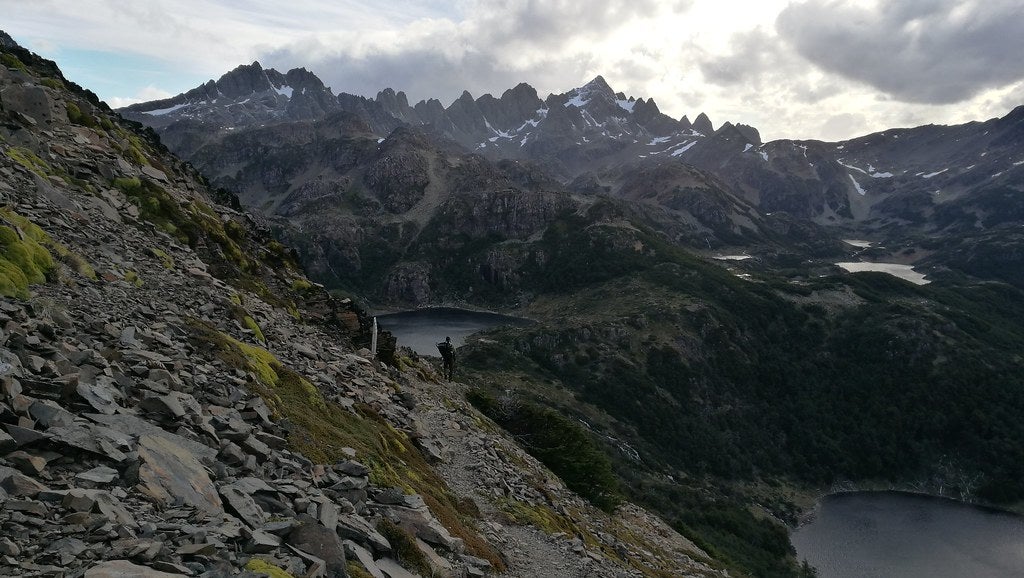Trekking the Edge of the World on Navarino Island

sdr
I find myself knee-deep in mud as I clamber through steep subantarctic forest to 2,719-foot Paso Virgina, the highest of five major passes on the Dientes de Navarino trekking route. Sinking even deeper with each struggle, I grab hold of a nearby branch and belly-flop off to the side as my legs finally break free. Staring up at the cloud-whipped sky in frustration, I take a moment to remind myself that the island’s lack of manicured trails is exactly why I am here. Slowly the beauty around me seeps in, all jagged peaks and sapphire-bright lakes without another human in sight, and I stand to face the mud again.
The 955-square mile island of Navarino is technically part of Chilean Antarctica, and has only one town. The rest of the island is uninhabited wilderness, a solitary dream for adventurous trekkers and native wildlife like rockhopper penguins and marine otters. For the past three days I have traversed the mountainous spine of that wilderness, scrambling up peaks and down peat bogs without another human in sight. I have been battered by snow, rain, and hail, with only the occasional burst of soul-warming sunshine. And wind. Always wind. Thanks to the constantly changing weather, the 33.5-mile Dientes de Navarino trek is an exercise in perseverance, but stubborn hikers are rewarded with unfettered access to one of the most remote and wild parts of Patagonia.
My five-day loop climbs through rainforest, squishes through boggy tundra, and scrambles over snow-covered passes in the Dientes mountain range. Hidden beneath those peaks, emerald blue glacial lakes are home to trout and optional day-trips. There are no set trails and no lodges serving warm meals here; unlike the 300,000 visitors overloading the trails of Chile’s Torres del Paine National Park each season, I follow nothing more than the ancient footsteps of the indigenous Yaghan people.
As I reach the top of Paso Virgina I cautiously peer over the rim of an ice cornice to glimpse the Beagle Channel and Darwin Range beyond the pass. The wind is so strong it knocks me backwards a few steps. I spend long seconds examing the steep slope of the other side, wondering how I’ll get down safely in this weather; skirting the rim to the southeast, I finally drop down to Laguna Los Guanacos through knee-deep scree.
On the last morning of my trek I wake up to snow drifting against my tent. I’m tempted to roll over and try to go back to sleep, but I know that at the end of the remaining bushwack an asado and possibly an Austral beer or two awaits. The Chileans would have it no other way. As I race towards the finish, a hot shower and food on my mind, I make short stop in the forest to grab a calafate berry off a nearby bush and throw it in my mouth. Legend has it this will ensure my return to Patagonia, and I already know I want to come back. Saying a silent farewell to the windswept mountains, I sure hope the legend is right.
Do It
Getting there From Punta Arenas, fly to Puerto Williams. Walk 45 minutes out of town to the official trailhead at Mirador Cascada. Season Early December to the end of March. Permit Not required. Itinerary Fit hikers can knock the entire route out in four days during the (relatively) dry summer months. Take five days and add on a summit of Monte Bettinelli, the second highest peak on the island. Guide It’s optional, but hiring one means you don’t have to worry about the notoriously tricky navigation. Enquire with Chile Nativo